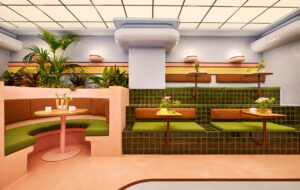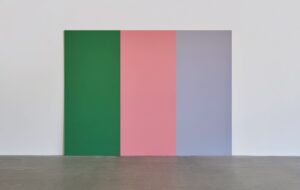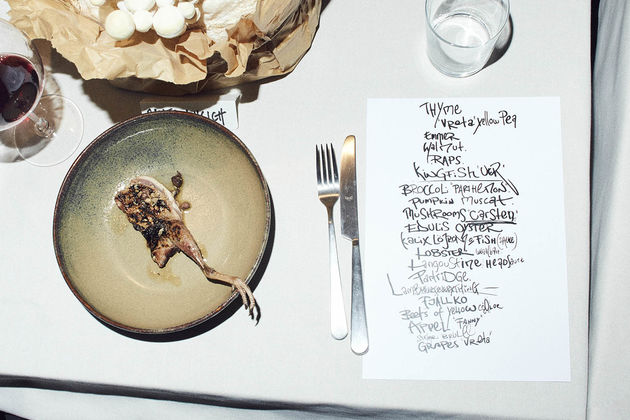 Partridge, from Carsten Höller’s Brutalist Kitchen Dinners. Photo courtesy of the artist
Partridge, from Carsten Höller’s Brutalist Kitchen Dinners. Photo courtesy of the artist
Everything from sofa pillows to planters is now marketed as brutalist and sold across the nation’s souvenir shops. But when an internationally renowned artist such as Carsten Höller feels the need to ride on brutalism’s coattails, it needs to stop, writes Peter Smisek
There was a time, perhaps a decade ago, when brutalist architecture was not yet on every tea towel in the Barbican’s gift shop. It was also then that an artist publishing a ‘Brutalist Cuisine Manifesto’ might have been seen as refreshing and maybe innovative. Höller first published his Brutalist food manifesto in 2017 and last month, an email about a series of his brutalist dinners recently served in Stockholm found its way into our mailbox.
However, at this very moment, we’re heading into 2020, and architecture fans and academics have all moved on to PoMo, while Brutalism is now used to sell souvenirs at the nation’s concrete landmarks. Which is all the more reason to take Carsten Höller’s Brutalist Kitchen Dinner to task. And while there’s nothing wrong with artists, cooks and architects stepping into each other’s fields, this only really works if it is a) done well, b) is interesting, or c) is funny. The Futurist Cookbook, for example – part anti-pasta satire, part problematic fascist grandstanding, and part blueprint for all kinds of outlandish dining ‘experiences’ – is all of the above. So is Le Corbuffet, which I recently had the pleasure of reviewing.
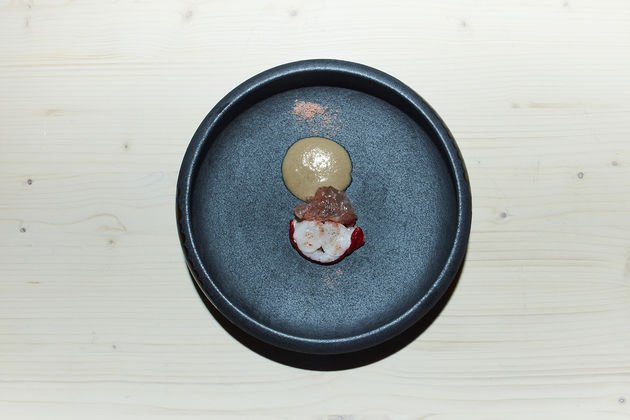 Lobster Westcoast – Höller’s brutalist cuisine uses “rare and hard-to-get ingredients”. Photo courtesy of the artist
Lobster Westcoast – Höller’s brutalist cuisine uses “rare and hard-to-get ingredients”. Photo courtesy of the artist
Unfortunately Höller’s earnest and actually interesting culinary experiment – a new style of cuisine that uses only one single ingredient, water and salt – shows serious gaps in understanding of actual brutalist architecture. Some of his points, such as ‘the use of overlooked, hard-to-get, or rare ingredients, or ingredients which are generally discarded’ are laughably wrong. Concrete remains the most used material on the planet, and though not all brutalist works are made of concrete, none are made of materials are usually described as ‘rare’ or ‘hard-to-get’.
He makes graver errors still. The central point outlined in his manifesto argues against ‘layering of taste’. Of course, this is nonsense. While brutalist architecture may seem formally overwhelming, layering is very much at its heart. Whether from an urban perspective – the unfolding of space when approaching these buildings to the complex circulation within – to carefully considered details inside. Large scale works of brutalist architecture, be it Le Corbusier’s Unité d’Habitation or Ernő Goldfinger’s Balfron Tower are imposing, but their interiors are intimate and airy. Ditto cultural buildings, whose vast dimensions often contain highly intimate, crafted and comfortable spaces.
Another fundamental misunderstanding is the artist’s insistence on serving one dish/ingredient per plate, but allowing the serving of several dishes simultaneously that the diner can combine as he or she pleases. What Höller has done is just further deconstructed the (godawful) trend of deconstructed dishes, the scourge of all recent Masterchef competitions, in which you are served a glob of cream cheese, a crumbled biscuit and a couple of pieces of fruit in lieu of a cheesecake. Except now it’s all on different plates, an infinitely worse version of decon.
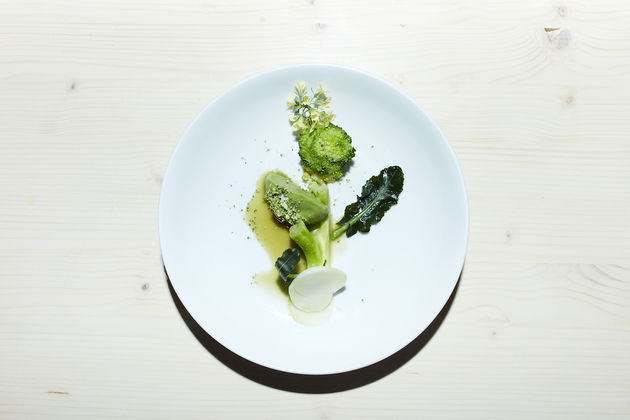 Broccoli Parthenon – one ingredient infinitely deconstructed and reconstructed. Photo courtesy of the artist
Broccoli Parthenon – one ingredient infinitely deconstructed and reconstructed. Photo courtesy of the artist
There are some sensible points, such as ‘portions tend to be of substantial size’, but overall, these are outnumbered by a rather partial misunderstanding of brutalism itself. It’s telling that Höller’s last point – ‘Brutalist Cuisine is named in reference to Brutalist Architecture, renowned for its linear and blockish appearance’ – attempts to make a sweeping statement, not realising that ‘linear and blockish’ applies to about 90 per cent of all modern and contemporary buildings, beginning with Walter Gropius’s Fagus Factory (1913) all the way to Zaha Hadid’s Contemporary Arts Center in Cincinnati (2003).
There is undoubtedly at least some artistic and culinary value to Höller’s experiment. But him calling the whole endeavour ‘brutalist’ smacks of an attempt to ride on the coattails of currently fashionable architectural style. Which is puzzling, given that Höller enjoys the patronage of some of the world’s foremost private collections and public art institutions. He should be brave enough to let his ideas stand on their own merits. One could call his attempts at cuisine essential. Distilled. Bold. Bloody-minded. Pig-headed. Stubborn. One-track. But we should stop calling random things brutalist.





